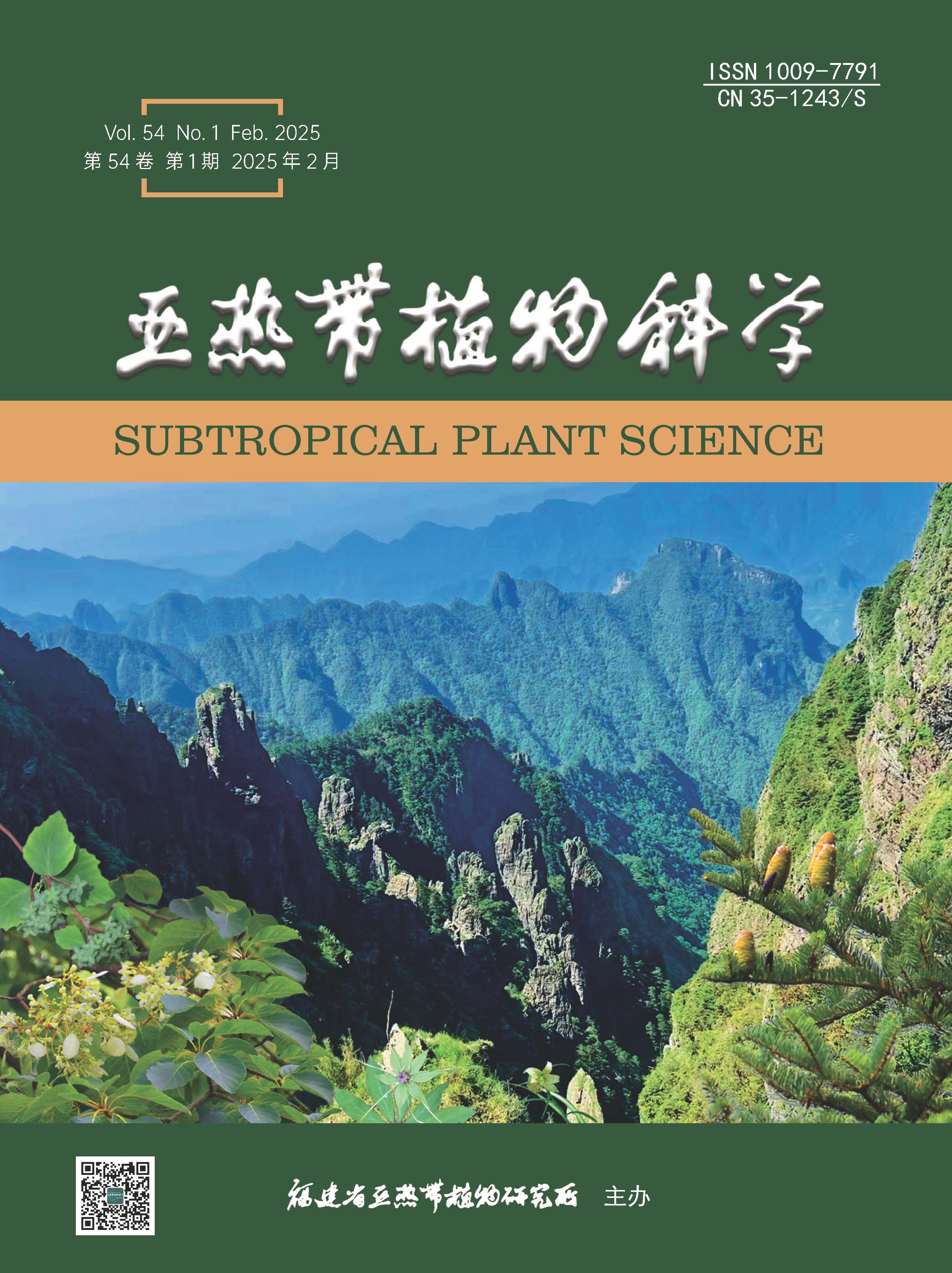|
|
Genome-wide Identification and Tissue Expression Analysis of the KNOX Gene Family in Altingia chinensis
WANG An-bang, YE Xing-zhuang, ZHAO Jin-tao, CHEN Zhi-yun, WENG Hui-ying, LIN Mao, ZHANG Guo-fang
2025, 54(1):
1-10.
DOI: 10.3969/j.issn.1009-7791.2025.01.001
The KNOX gene family has important regulatory functions in leaf-shape growth and development in plants. This paper aims to analyze the KNOX gene family of Altingia chinensis and explore its tissue expression pattern. We used bioinformatics methods to identify and study AcKNOXs at the whole genome level of A. chinensis, and analyzed the gene location, gene structure, phyloevolutionary relationships, gene collinearity and the transcriptome expression. We identified 11 AcKNOXs from 8 chromosomes in the A. chinensis genome. Among them, AcKNOX6 and AcKNOX9 lack ELK and Homeobox KN domains, AcKNOX7 lacks ELK domain, the others have four conserved domains: KNOX 1, KNOX 2, ELK and Homeobox KN. 11 AcKNOXs are classified into Class Ⅰ (AcKNOX1, AcKNOX2, AcKNOX5, AcKNOX8, AcKNOX10, AcKNOX11), Class Ⅱ (AcKNOX3, AcKNOX4,
AcKNOX7) and Class M (AcKNOX6, AcKNOX9). The AcKNOXs protein contains 144 to 444 amino acids. They were all located in the nucleus and are all acidic, unstable and hydrophilic. Through the expression pattern analysis, we found that AcKNOXs genes have tissue specificity. The majority of the members of the same subfamily showed the similar expression pattern. The main amplification mode of 11 AcKNOXs were segmental duplication, no tandem repeats were found. There were four pairs of genes with collinearity, AcKNOX3/AcKNOX4, KNOX2/AcKNOX8, AcKNOX6/AcKNOX9, and AcKNOX5/AcKNOX10, respectively. The results of this research provide the study of KNOX gene family with scientific basis, which help to do in-depth study on the genomic characteristics.
References |
Related Articles |
Metrics
|
